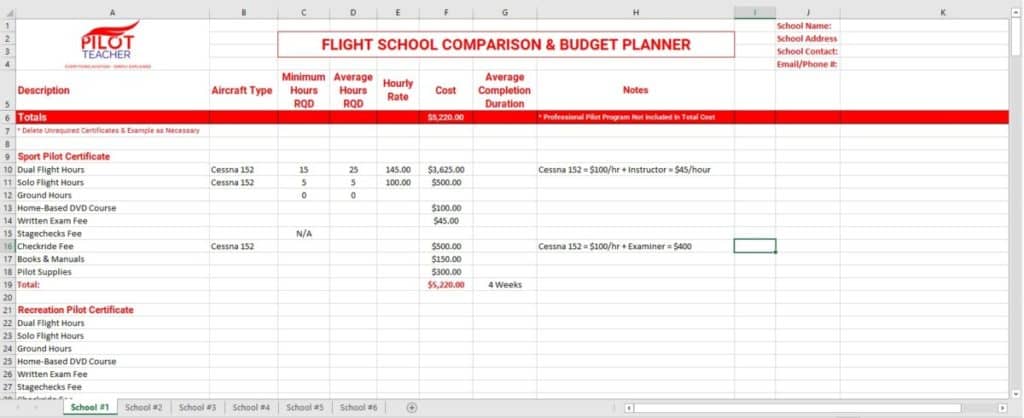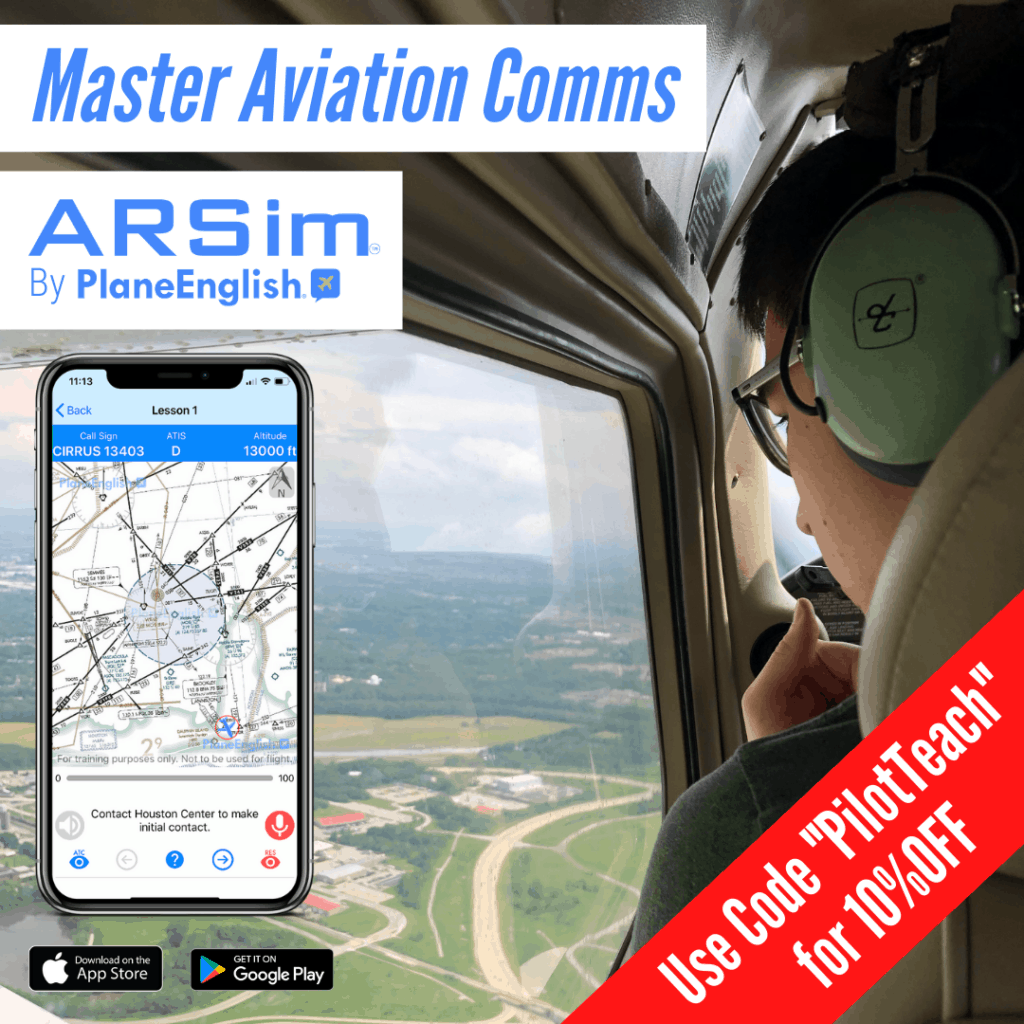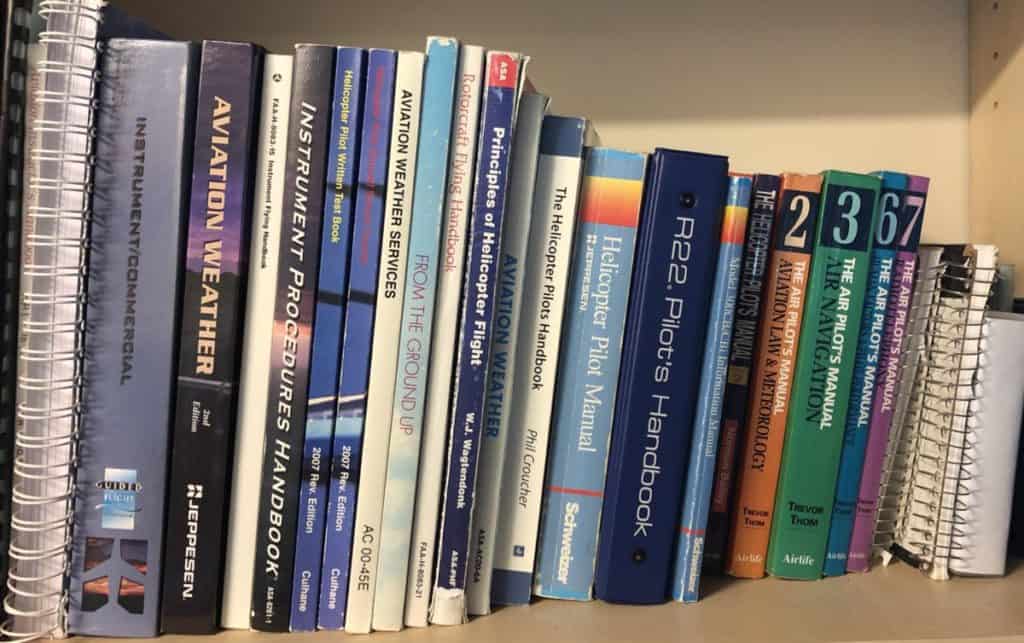
Once you have selected your flight school the dream of becoming a pilot is on its way and if you are like I was, you cannot sit still! The next step is getting prepared for your arrival at the school! There are some things that are best acquired before you arrive and then some things are best left until you get to school.
The biggest problem I fell victim to and that of many other students is that once you see $60,000 sitting in your account to pay for your flight training, the temptation to buy lots of stuff you THINK you need is very strong.
Some of the Most Essential Items You Will Need for Starting Flight School are:
- Headset
- Sunglasses
- Watch
- Kneeboard
- Flashlight
- Equipment Bag
- Books
- Charts (Maps)
- Log Book
- E6B Flight Computer
- Study Software
- and more…
This article is designed using my experience as a student and a flight instructor to help direct you to the things you will need, the things you might need, and things that can make your life helpful further into your training.
This list is going to show you some of the most popular and recommended gear that I have personally used to help you get ready for your first training flight! Many of these things I still use today and you can find out my Recommended Gear that I use as a full-time helicopter pilot right Here.
Note: The products I recommend here do make me a small no-cost-to-you commission if you purchase them, for which I am extremely grateful and it helps pay for the upkeep of this website – Thank You
Headset
Unless you are attending a very small flight school you will need to have your own headset. Even if the school does provide headsets in their aircraft you need to also think about how many sweaty ears and heads those headsets have been used on! Not a very nice thought. A headset is one of those investments that will last you a very long time if you look after it.

I still have my original Bose Aviation X headset that I purchased when I was in flight school almost 2 decades ago and it still works awesome! Although I now wear a helmet for my day-to-day flight operations, I use my headset when I’m training or in the simulator. It has more than paid for itself!
NOTE:
Headsets come in both Helicopter and Fixed-Wing models. Ensure you purchase the right headset to suit your aircraft. Helicopter models will come with a single male plug while Fixed-Wing models have 2 male plugs for connecting your headset into the aircraft.
Good Option:
David Clark H10-13.4
Building on the legendary line of David Clark headsets the H10-13.4 is by far one of the most popular budget headsets seen all over the globe. Stereo earcups, rugged build quality, and an excellent noise-canceling microphone make these a great headset for you in any aircraft.
If you are looking for a reliable, high-quality headset that provides excellent audio clarity but doesn’t have all the bells and whistles of the premium headsets then the H10-13.4 should be at the top of your shortlist!
You can find the David Clark H10-13.4 Headset Here at Amazon.com
Better Option:
Lightspeed SIERRA ANR
For the budget-seeking pilot who still expects the highest quality products then the Sierra from Lightspeed is an excellent choice. A very popular headset due to its Active Noise Reduction, Bluetooth compatibility, lightweight construction, and incredible audio clarity make this a popular sight on aircraft dashboards
Flying in a noisy aircraft for hours on end can really begin to fatigue you, especially if the headset is not a comfortable fit. The endless great reviews are all over the web and by talking to my students it is easy to see why the Sierra is a great option! Add to that the 7-year warranty from Lightspeed you cannot go wrong when selecting this headset!
You can find the Lightspeed Sierra Headset Here at Amazon.com
Best Option:
Bose A20
This is by far the best headset on the market today and owning its older version I can attest to how good these are. They are not cheap but they will last you forever. With Active Noise Reduction, Bluetooth and a super comfortable headband and ear cups it is easy to see why these are one of the most popular headsets!

One of the reasons why these are a great headset is that if you are becoming a helicopter pilot you can retrofit them into either Gallet or Evo helmets giving you superior hearing protection with the incredible Active Noise Reduction!
The Active Noise Reduction with the Pedigree of Bose is reasons all on their own to purchase this headset!
I have recently switched to this headset and I can tell you that it is incredible! Lightweight, comfortable, crystal clear sound and the BlueTooth capability is worth its cost all on its own! You can find me wearing them in my latest videos on the Pilot Teacher YouTube Channel – Be sure to check it out Here
You can find the Bose A20 Headset HERE at Amazon.com

Join My Newsletter & Get Great Tips, Information and Experiences To Help You Become a Superb Pilot!
Sunglasses
Sunglasses are a very personal selection but are an absolute must for protecting your eyes while flying and preparing your aircraft for its flight. You may have sunglasses already, but if you don’t, this is where you need to get some.
When I moved from the UK, my cheap sunglasses could not cut it in the bright Oregon sunlight and after several weeks of sore eyes a fellow student who was an Optometrist/Eye Doctor diagnosed my problem – I needed better sunglasses.
Good quality UV protection is paramount and being able to see through sun glare to search for other aircraft, ground references or approaching birds is a matter of flight safety. There is a reason why you always see pilots wearing sunglasses!
One thing you need to be careful of is avoiding Polarized Lenses. Polarized Lenses can filter out or alter certain shades of color and this can be exacerbated when progressing into aircraft with glass screen displays – also known as a glass cockpit. As a pilot, you need to be able to see when aircraft and engine parameters are Green, Yellow or almost RED.
Being unable to accurately and instantly discern these colors could cause a serious and expensive limit exceedance which at worst can cost the flight school a great deal of money to repair or worse, allow the aircraft to enter a fatal flight condition.
If you wish to find out more about why sunglasses are so important in protecting your eyes while flying, please be sure to read my article about it Here: Do All Pilots Need Sunglasses? : Yes, Find Out Why!
To see a great selection of male and female sunglasses to get your search started please check out my recommendations at the Pilot Teacher Store HERE.
Watch
Just as sunglasses are a very personal selection, a watch is no different. A reliable watch is almost as important to a pilot as a headset. Not only is a good watch required to ensure you show up for your flights on time but most of the cross-country flying you will do as a student will require accurate timings to validate your position. You will use your watch all the time for recording engine start and stop times, wheels/skids up and down times, ETA, Time Enroute, Fuel Burn, and many, many more.
Just like my Bose headset, I still have my Citizen Navihawk watch I was bought as a present when I began flight school and I still use it today – albeit being scratched to heck from years of bush flying, but if you buy a good one, it will last you years or even decades. Many of the tried and tested watch manufacturers now make watches specifically designed for use in aviation, whether they are just very simple to read, or like my watch, have an E6B Whiz-Wheel in the outer bezel!
As with sunglasses, to see a great selection of aviation-focused watches in various price ranges, for both men and women please check out my recommendations at the Pilot Teacher Store HERE.
They are all great watches listed at Amazon.com
Flight Bag
As nerdy as it sounds, you will begin to accumulate a lot of gear required for your flight training, and turning up to a flight or ground school lesson without a certain piece of equipment or book not only wastes time but can reflect on your preparedness especially if attempting to gain employment with the flight school upon graduation.
Fixed-wing students will usually take their flight bags into the cockpit and depending on the aircraft a well-organized and correctly sized flight bag acts as a very handy co-pilot. Helicopter students are not so lucky. The Collective control takes up the space a flight bag could sit so most helicopter pilots will need to carefully arrange their gear before liftoff to enable easy access during the flight. This is where a kneeboard comes in (More on these later).
Flight bags are best selected once you get to flight school and see what is most popular with the current student and flight instructors. But to help you with your selection here are some of the most popular bags I see showing up around the school:
Good Option:
Simple Flyer Alpha Pilot Headset Flight Bag
When just a simple, durable, high-quality flight bag is required, this bag is sure to make your shortlist.
This bag contains multiple pockets for a headset, GPS, radio, and a padded pocket for a tablet. Lots of storage for pens, charts, and pilot gear makes this a great bag at a great price!
Dimensions: 14.7″ x 13.9″ x 3.3″
You can find out more information on this bag Here at Amazon.com
Better Option:
Design 4 Pilots Cross Country Flight Bag
This compact flight bag is designed to provide all the carrying space for your day-to-day flying gear. This bag easily accommodates a headset, GPS, Charts and Checklists, and a Tablet.
Inside is arranged into modular compartments for you to customize to suit your setup with easily accessible pockets for the items needed during the flight.
Dimensions: 13.2″ x 11.6″ x 8.0″
You can find out more information on this bag Here at Amazon.com
Best Option:
Brightline Bags Flex B7 Flight Bag System
For the ultimate in carrying capacity and ease of accessibility, these modular flight bags give you a pocket for every item you will need on your flight.
The modular construction allows you to remove the pockets you do not need just yet, but then easily attach them when you need to store extra gear.
Dimensions: 14″ x 12″ x 8″
This is the flight bag that I personally use and I can tell you it is one of the most versatile bags you can buy. Because it is modular you can purchase the sections to create your perfect bag – oh and the number of pockets it has is insane!
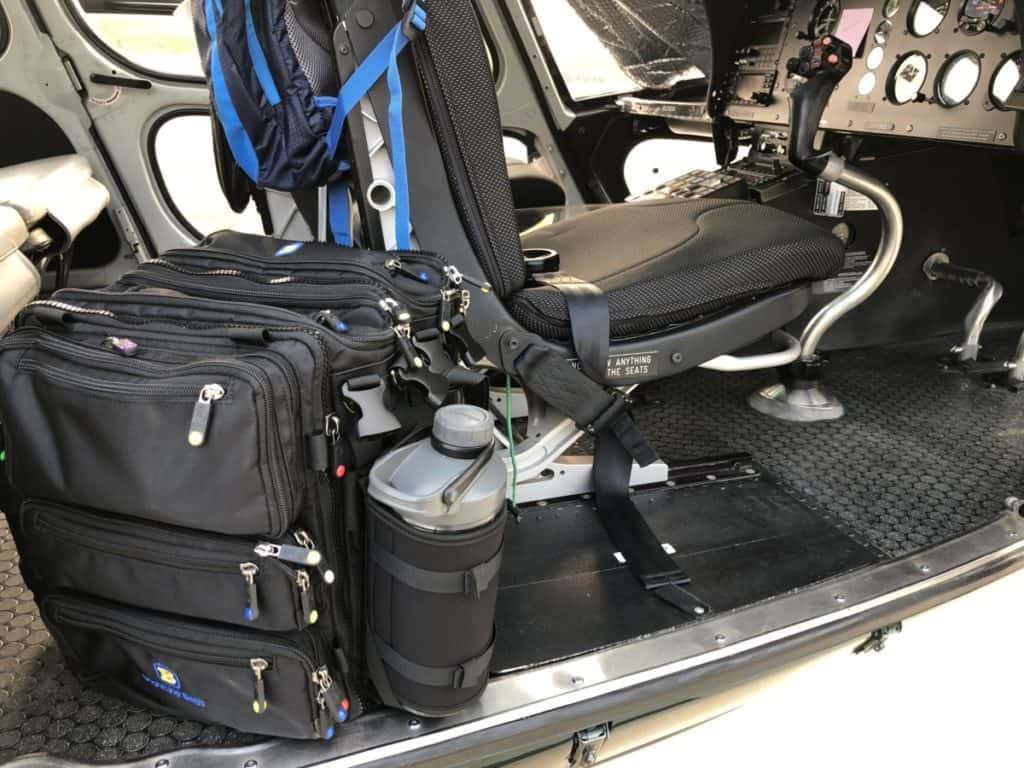
You can find more information on this bag system Here at Amazon.com
Logbook
Everything in aviation is tracked by hours, including your flight time. Keeping an accurate record of every flight you do is the only way to show a future employer your experience. This is where a Pilot Logbook comes in.
After every flight, you need to fill out a logbook so that every element of the flight and your growing experience can be logged.
There are two ways that I ALWAYS recommend. First is by using a paper logbook and the second is a digital logbook. By keeping both of these up-to-date you will never have the misfortune of losing your entire career proof of what you have done. I’ve heard horror stories of logbooks being dropped in water or digital copies lost when a hard drive went bad. This is where two copies in different formats keep you protected.
For a paper logbook, I recommend you buy a larger Professional Pilot Logbook if you are looking at a career in aviation, or a smaller one if you just plan to fly for pleasure.
The one I use and recommend is this one from Amazon.com
For the Software Logbook, I recommend Safelog. It is on an online subscription-based logbook but is one of the most widely used by professional pilots with a great pedigree and quality reviews.
You can find out more information about SafeLog Here at PilotLog.com
Kneeboard
A kneeboard is like a table that straps to your leg to allow the most pertinent information needed for your flight to be right there ALL THE TIME!
There is a vast array of kneeboards from just a simple board to ones with pockets, pen holders, and even ones to hold an iPad/tablet.
When you begin to move into the cross-country or IFR portions of flight training this is where the kneeboard and hands-free operation really shine. It is definitely one of the must-haves on any pilot’s shopping list.
You can find a great selection of KneeBoards Here at Amazon.com
FOM /POH
No matter which aircraft you fly you will need a copy of its Flight Operation Manual (FOM) or Pilots Operating Handbook (POH) – Depending on what each manufacturer calls it.
The FOM/POH is the manual published by the manufacturer that lists all the things you can and should not do with the aircraft, its limitations, normal and emergency procedures, performance charts and data, equipment, and systems descriptions. As a pilot, it is your duty to understand your aircraft inside out, and becoming familiar with the flight manual will be one of the first things your instructor will be requiring you to do.
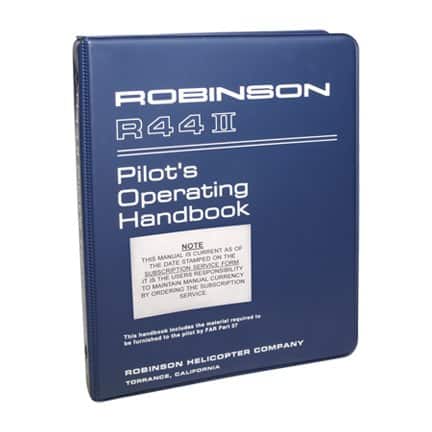
Most aircraft used for training have their flight manuals available for purchase but once you begin to get into the bigger and more complex aircraft the flight manual will be given to you as part of the initial training course. My flight manuals for the Sikorsky S76 and Agusta AW139 were two very thick manuals for each aircraft, so I dread to think what the manuals for the Boeing 747 or Airbus A380 must be like!!
See here for a selection of the most popular aircraft flight manuals available at MyPilotStore.com & the Aircraft Manufacturers’ Websites:
Cessna Manuals – Click Here
Piper Manuals – Click Here
Robinson Helicopter Manuals – Click Here
Guimbal Cabri Helicopter Manuals – Click Here
FAR/AIM
The FAR/AIM stands for Federal Aviation Regulations/Aeronautical Information Manual and is referred to in many places as the ‘Aviation Bible’. This book is a must for every pilot flying in the US and is split into two parts:
1. FAR – (Federal Aviation Regulations) This is all the regulations applicable to flying in the US under Titles 14 & 49 of the CFR – Code of Federal Regulations. If you need to know the answer to the legality of flying this is the resource you turn to. The FAR will list all regulations pertaining to flight training, commercial operations, flying at night, medical requirements, and airport regulations, you name it it is in here, but be warned it takes some training to find your way around it.
If you have selected the right flight school your instructor will be well-versed in the FAR’s and will train you on the most important points you will need based on the license/certificate you are training for.
2. AIM – (Aeronautical Information Manual) This section lists all of the ‘Good To Know’ things in aviation. It is like a reference manual for all things that are not a regulation. Things like navigation procedures, air traffic control procedures, airspace, and medical facts will be contained in this section.
Once you arrive at flight school you will see other students’ FAR/AIM manuals that are covered in tabs, notes, and highlighter. This is why you need a paper copy of the most current FAR/AIM when you arrive. As you progress through the varying licenses and endorsements your own FAR/AIM will become as highlighted and tabbed as your fellow students. I remember feeling quite overwhelmed the first time I saw a well-used FAR/AIM, but it is like making a huge Sunday Roast – One part of the meal at a time!
You can find the latest Paper Copy of the FAR/AIM Here at Amazon.com
To also help you, for quick reference on a computer, you can find the online version to save in your Browser Favorites HERE
Whiz-Wheel or E6B Flight Computer
There are so many calculations and conversions you need to master in aviation that it can be mind-boggling! Luckily there is a great device called an E6B that has been around since the dawn of time to aid pilots in those calculations and conversions.
Although the learning curve for the E6B can be steep, once mastered this simple slide-rule type device will allow you to quickly convert or calculate any number you need, which is a great asset while in flight.
Once the basic E6B Flight Computer has been mastered I found the switch to a digital version, especially during the flight planning stages very convenient, however, the Whiz-Wheel is still far easier to use one-handed while in flight!
Tip: Here are some great training videos on YouTube for how to use your E6B Flight Computer!
You can view a great selection of E6B Flight Computers Here at Amazon.com
Online Training Courses
When you first begin flight training the amount of information you have to learn can be very overwhelming! Taking it step-by-step is the key to absorbing this firehose of information that will just seem to keep coming. It does get easier with time but one of the best ways to learn is by using multiple resource media.
This is where Online Learning Courses really come into their own. Studying the same material day in, day out can not only become fatiguing, but monotonous.
By varying the delivery of the training material it really helps with retention. There are some fantastic training courses out there but the ones I have used, and recommend to many of my students are the products from Rod Machado.
There is a vast array of training material to pick from and his delivery methods are very easy to absorb. You will not go wrong with his training courses!
You can find out more information on all of Rod’s Products at his website HERE – RodMachado.com
Written Test Training
Getting ready to sit the written exams for any pilot certificate requires practice, especially if this is your first time sitting one. After going through the course material, ground school with your instructor, and reading the books, you should have the knowledge to sit the exam, but what will the exam be like?
This is where online practice exams come in. By spending the week or two leading up to the written exam practicing using actual questions from the current question pool you will be able to confidently walk into the exam and pass it the first time!
This is the way I prepared for my exams along with pretty much every pilot I went to school with and the pilots I now see going through their training. The small cost of the online test prep is well worth it and once you have passed your exam using one of these preps, you will use them every time you sit a written exam! This is why I only recommend FAATest.com!
A great feature of FAATest.com is that you can bundle your test preps to save money. This is really helpful if you are on a career pilot program with your flight school and will be sitting many exams over the next year!
For more information on the vast selection of Written Exam Preps available I recommend you check out FAATest.com – Here
Flashlight/Headlight
At some point in your training, you will be having to pre/postflight and fly in darkness. To safely see what you are doing and looking at, a flashlight and/or headlamp is essential.
I personally like to have both as a flashlight is handy during inspections, but a headlight is handy for when you need hands-off ability, especially when flying.
One thing to bear in mind is that a bright flashlight is great for inspections but they are terrible for destroying your night vision, once acquired. This is where a light with a red light or lens is essential. Flying with a red lens on your light while flying allows you to see the important information you need but keeps your night vision.
This is a great, lightweight Dual-Color LED Flashlight I Recommend from Amazon.com
This is the Dual–Color Headlamp I Recommend, also from Amazon.com
Post-it Notes
OK, this one might seem odd but a pack of Post-it Notes in your flight bag will come in handy so many times!
There are two great uses for Post-it Notes:
- To write out Acronyms to remember when flying. At times trying to remember simple things while starting to become mentally saturated can be difficult. A simple checklist on a Post-it Note stuck on the window or instrument panel cures that.
- To help cover the sun on the window when you’re on one of those long, early evening Westbound flights and the sun is right in your face! Simple, but I still use it to this day! – Only use one!!
Plotter
It won’t be long before you are introduced to the art of planning a flight. Careful route selection, measuring, marking, and analysis of the charts are all required for a successful flight from Point A to Point B.
The longer the distance, the more planning is required and one of the most useful tools that you will need during this stage is an Aviation Plotter. This device combines many functions into one device to allow you to efficiently measure and mark in one go.
You can find a great selection of Aviation Plotters Here at Amazon.com
Timer
Accurate timing during cross-country flights can be the difference between an easy, stress-free flight where all your visual waypoints show up as expected or you get completely lost and your stress level is through the roof!
The simple way to combat this is an easy-to-use, easy-to-mount, and easy-to-reset digital timer. Watches can be used but more mental math is sometimes required, so this is where a timer mounted on your Kneeboard, that is easy to see and operate really helps the flight go smoother!
I personally have always liked the timers with dual timing functions. This way you can set a timer for total time en route and then time each flight leg individually. It is a personal preference and you will see many timers around the school once you arrive.
This is the type of timer that I personally recommend Here at Amazon.com
It is cheap, small, easy to use and mount, has dual timers with count up and down functions, and alarms if you wish to use them.
Training Manuals & Books
Books play such an important role in your training and make sure you set aside several hundred dollars for them as the cost can soon add up.
I find books are a nice learning tool as you can highlight and make notes in them and they are great for quick referencing, even years later – As you can see from my stack which is closing in on 20 years old!

Your local flight school should have a shop where you can buy them but also be sure to check out the pricing online as some great deals can be had, especially if you buying a bundle.
Here is just a small selection at Amazon.com
Not Super Essential Gear, But Really Helpful:
Above are just the essentials you will need during your first months of training and getting them ahead of time will allow your training to progress smoothly without having to wait for them to be delivered.
In addition to ‘The Essentials’, below is a list of items I regularly see around the flight school that can be really useful in helping your training, but not essential!
PC Flight Simulator
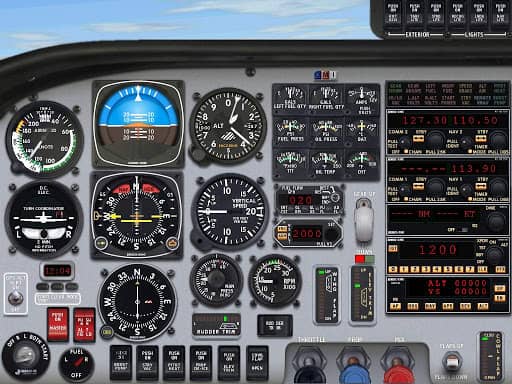
When it comes to learning procedures and checklists, a desktop aircraft simulator is a great learning tool. For a few hundred dollars you can add the flight controls to your laptop or PC and have an identical replica of your training aircraft in your home/dorm room to practice any time you wish.
For more information on Flight Simulators, I have an entire article dedicated to them which you can find here:
PC Flight Simulators: Can You Really Learn To Fly On Them?
ForeFlight
ForeFlight has become the industry standard for GPS mapping and much, much more. With up-to-date moving charts, IFR approach procedures overlaid, airport and FBO data, and much, much more it is one of the most powerful tools in the cockpit today.
As it continually gets improved it can show you the weather, aircraft, and terrain right on your phone or tablet! Having used ForeFlight for many years in an IFR capacity it truly is a wonderful addition to your smart device and its price really does not reflect its power!
Once you have mastered the basics of navigation and are embarking on your career then ForeFlight is something you will begin to see more and more. I think this could be one of the biggest advances in General Aviation in the last decade!
You can find out lots more information on ForeFlight at their website Here
When your iPad or iPhone needs GPS or the onboard GPS becomes glitchy when at altitude, a reliable Bluetooth GPS receiver will dramatically improve the performance of ForeFlight or any other aviation GPS App.
A simple Bluetooth receiver like This One at Amazon.com is what I and many other users recommend.
iPad

To many, this may seem a bit extravagant for a cockpit but with the many Apps available today an iPad can become a very useful tool, in fact, many companies have already gone to complete Electronic Flight Bags and do away with having to carry the many charts, procedures, and manuals required by law.
The iPad mini for most pilots is the perfect companion for its size in a cockpit. It can be easily mounted via a permanent cradle or the use of a suction/yoke mount can easily keep the screen in view but not in the way.
A full-size iPad, in my opinion, is just too big for most cockpits, unless you are flying for the airlines, at which point you will most likely be provided with a company-issued device.
You may notice I say iPad and not tablet. The One and Only reason for this is that currently, ForeFlight is only available for Apple devices and having a tablet without ForeFlight is not much use in my opinion.
An iPad is a big expense, but if you are thinking about purchasing one and would like to check out This One at Amazon.com, I would receive a small, no-cost-to-you commission for referring you to Amazon and I would be very grateful!
Tablet Mount
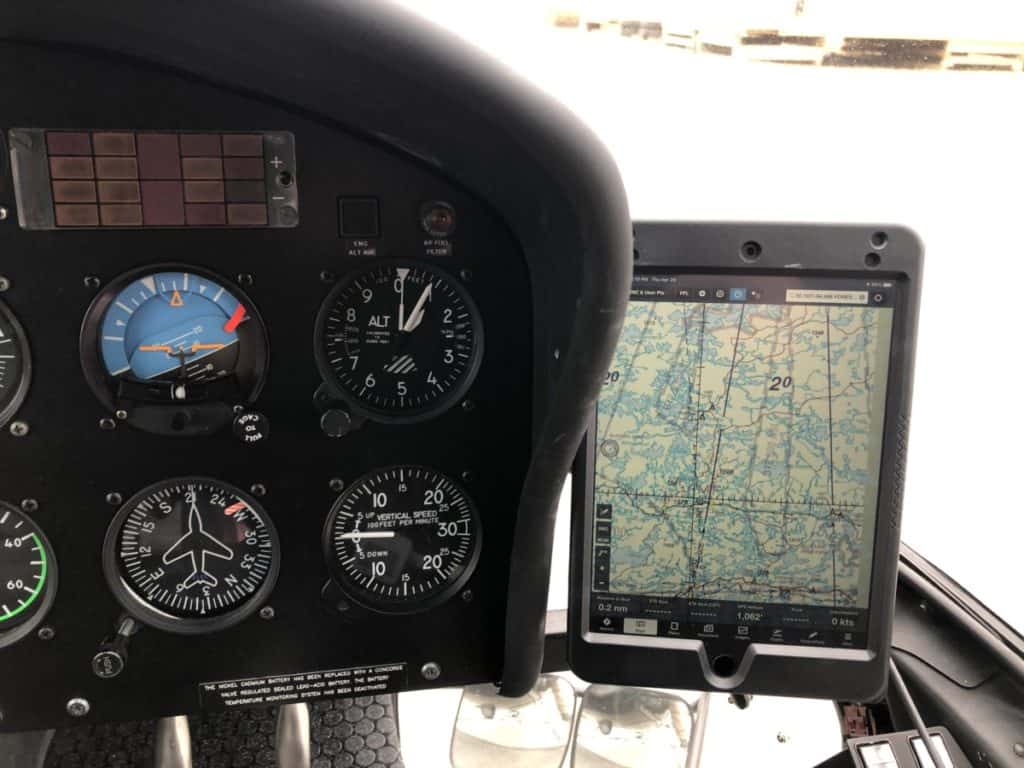
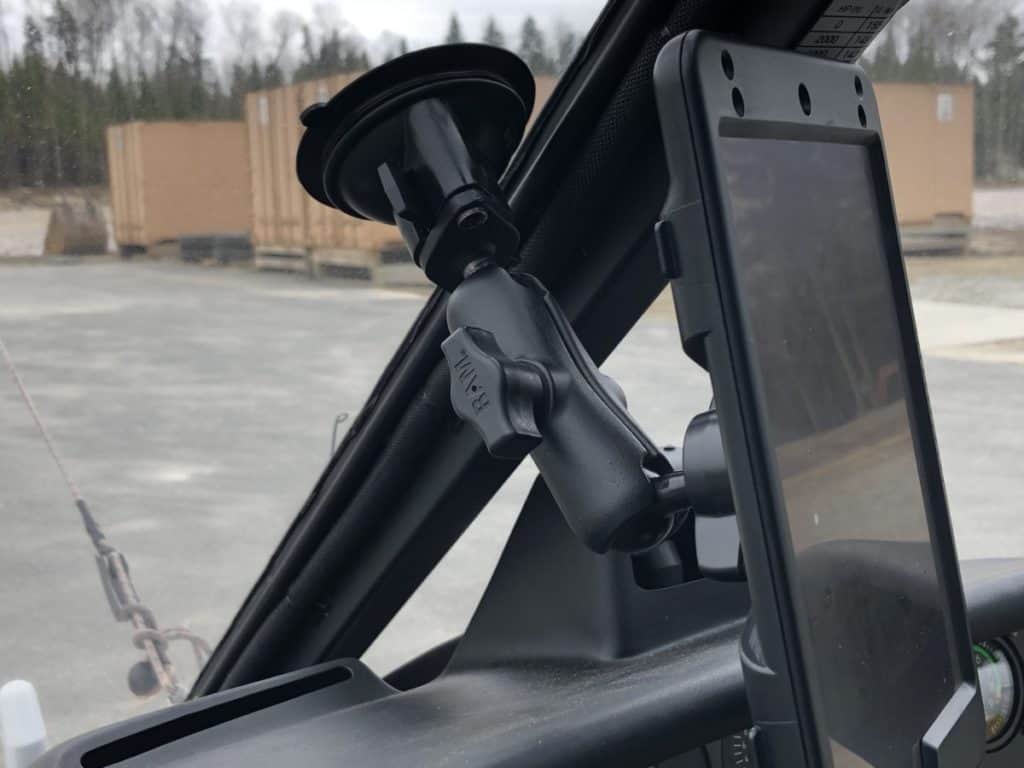
Having a secure way to mount your tablet in the cockpit is of paramount importance. Not only having a system to allow you to mount it where it is comfortable to see and operate, but it needs to be secure! A tablet falling into the pedals at the wrong moment could spell disaster.
For these reasons, I recommend the PIVOT cases and mounts for the iPad. We have been using their system in our aircraft for the last 6 months and I can say they are fantastic! The rugged case encapsulates the iPad and comes with a cover that integrates into a stand when using it outside of the aircraft. When it’s time to go flying, the cover unclips and the iPad easily clips into the moveable mounting arm that stays in the aircraft! Simple, effective, secure, and fast!
Because of this, I have asked the U.S. distributor for a discount code for you and they generously have given you 10% off any of the PIVOT iPad range!
See the PIVOT lineup HERE at flyboys.com
Be sure to use the Discount Code PilotTeacher to get 10% off!!
We have the RAM MOUNT systems in our aircraft and the PIVOT cases integrate easily using a ball adapter. We have some aircraft with the mounts installed directly into the cockpit, and for those without, we use the RAM Suction Mount system. Both work great with the PIVOT System.
For a Great Selection of the RAM MOUNT System, you can view them HERE at Amazon.com
If you would l
Hand-Held Radio
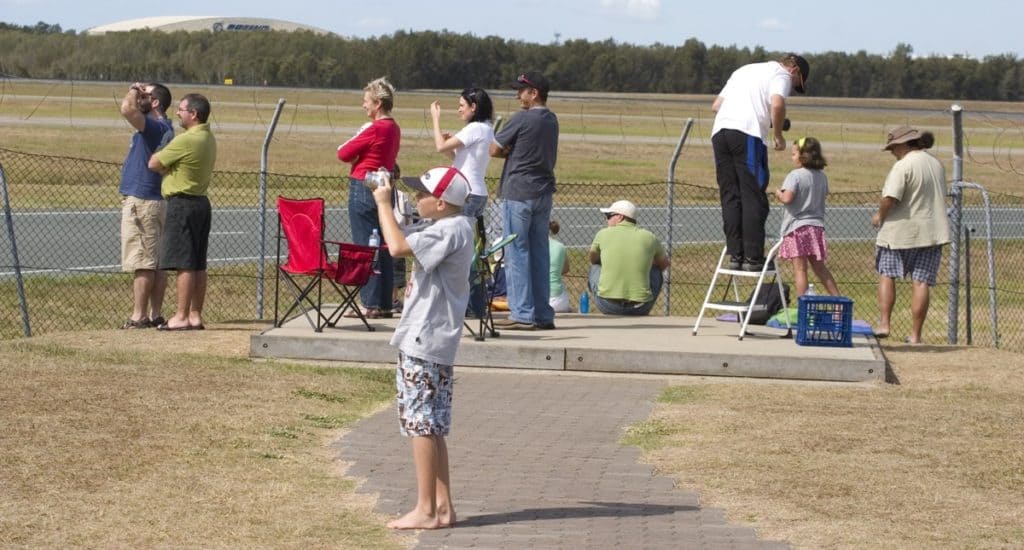
When you first begin flying the talking that goes on between your instructor and air traffic control is another language and can be VERY intimidating. With an understanding of what the controller is expecting from you and vice-versa it then comes down to practice.
I have had many students, myself included that were complete nervous wrecks when it came to pushing that button and talking to a stranger, and here are two ways I have personally used and recommend ever since:
- Buy yourself a hand-held VHF Transceiver or Scanner. By having your own radio, you can go and spend your spare time sitting by a busy airport (Training Airport is even better) and just listen to the talk between the tower and the aircraft.
When you start to feel confident, practice doing the calls (but never key the mic!!!) that a flying aircraft would make, just imagine you are the pilot in command. Then see if the calls you practice make sense.
Transceivers allow you to talk with ATC and are more expensive, while Scanners just allow you to listen and are cheaper, just be sure to get a radio with frequencies 108 to 137 MHz as this is the band dedicated to aviation.
You can find a great selection of Aviation Radios in our Store Here - The second great method of learning ATC is using a software-based learning tool and this can work really well. The software gives you many examples and allows you to practice stage by stage until you have the confidence you need.
REMEMBER: ATC is there to help YOU. Without pilots, they have no job!
One of the best ways to learn the aviation language is with a simulator like this one from PlaneEnglishSim.com.
A Great tool will help you master your radio without feeling shy and turn you into a confident pilot.
An added bonus is that they will give you 10% off by using the code PilotTeach at checkout!
Click Here to head over to PlaneEnglishSim.com and see their Super Helpful courses for both VFR & IFR, new pilots, and veteran pilots – They have it all and you will not regret using their tools! I used a software very similar back when I learned many years ago and it was a Game-Changer!
and last but not least…
Leatherman/Multi-Tool
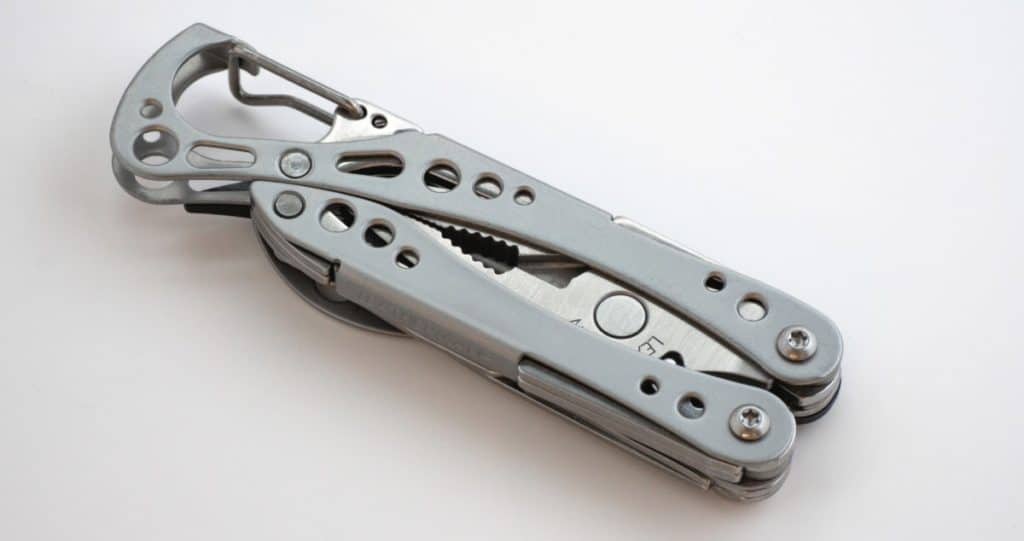
This might seem like an odd essential and it will really depend on the type of career you are looking to embark on. If you are planning an airline or corporate career path then the use of such a device will very rarely be needed, however, if you plan on working out in the field and away from major airports then a multi-tool can be used on a daily basis.
Having a multi-tool on hand can really help you out of a tight spot when help or maintenance is not available and you have no or very limited tools. The basic maintenance and tasks you are allowed to do to an aircraft as a pilot can usually all be accomplished with a good-quality multi-tool and the price of them really make them a no-brainer to have one and throw it in your flight bag.
I have to recommend Leatherman Multi-tools as I have had one for coming close to two decades and it is still as good as the day I bought it. There are some excellent alternatives out there, but Leatherman is the only brand I can personally recommend!
For a Great Selection of Leatherman Multi-tools Click Here at Amazon.com
For a Great Selection of other brand Multi-tools Click Here at Amazon.com
To Finish
Well folks there you have my most recommended gear that I have personally used and see regularly around the school. Just like any professional, having the right tools for the job can really help how well you do the job and how it can make your training path so much easier.
Many of the products are not cheap but if you buy the right ones the first time they will be sure to last a long time and they will pay for themselves many times over.
This list was created to help you spend your money wisely on good products with a good history. I hope you find this list helpful and if so be sure to check out the Helpful Resources below to further help you.
Helpful Resources
To further help you in your quest to become a pilot the following resources may help you:
- Choosing a Flight School: 9 Awesome Secret Tips From an Instructor!
- Cost To Become a Pilot: All the Licenses Compared!
- How Hard is it to Become a Pilot? An Instructor Tells All!
- Flight School Comparison & Budget Planner Tool – Free Download. Enter Your Email Below To Get Your Copy:
